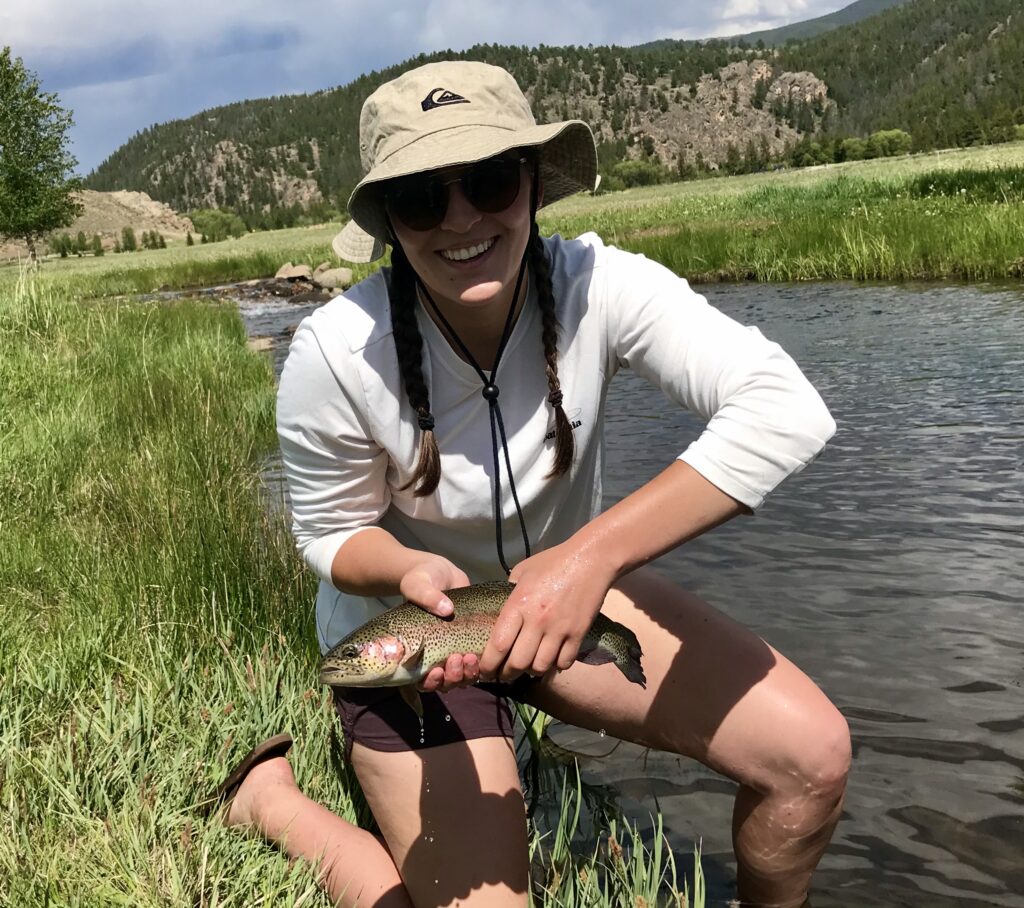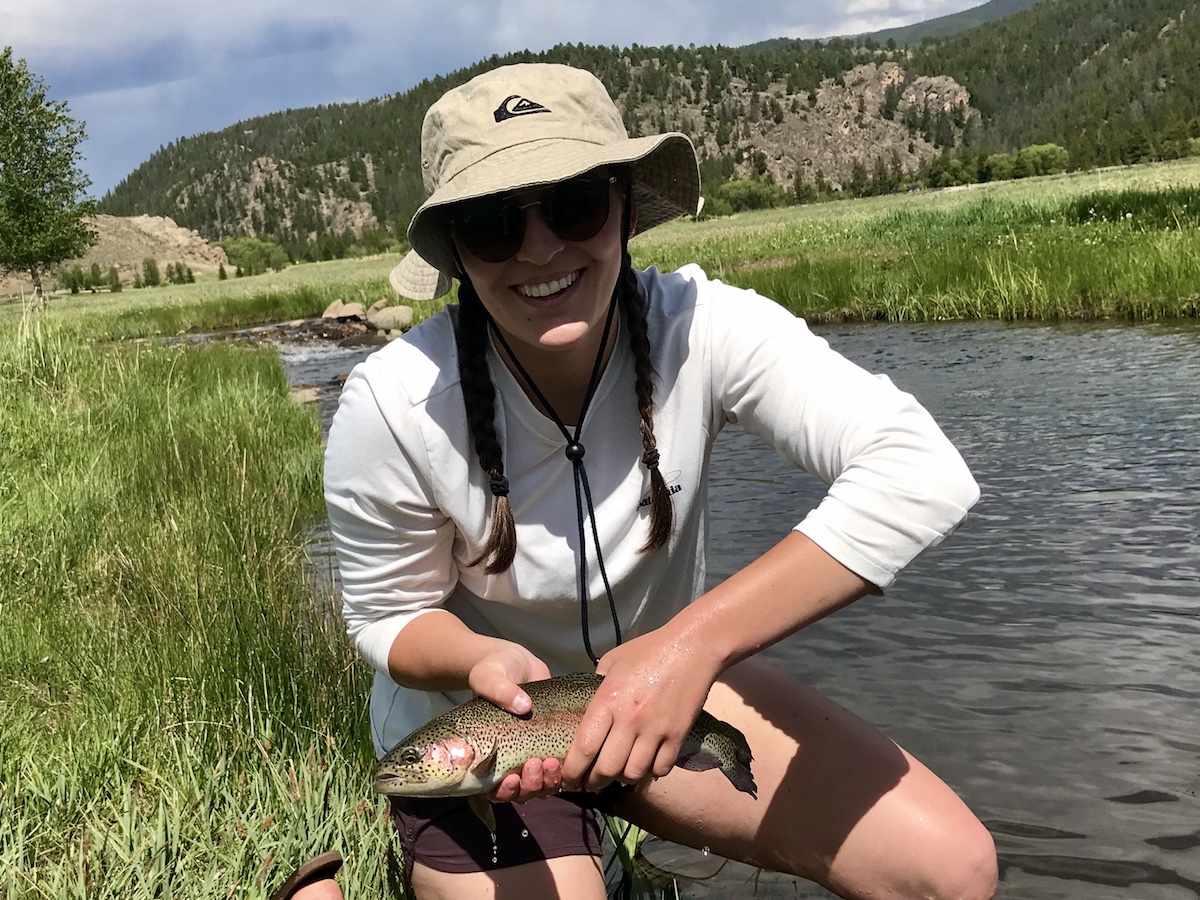Wilder’s Master Fly Fishing Guide, Ben Riedel, gives his detailed Taylor River Fishing Report for June. It’s a must read before heading out to the river.
Current conditions at Wilder are changing quickly. Longer days, warmer nights, and rising water temperatures, are promoting bug and fish activity. It still looks like a fantastic summer for fishing.
Water levels have risen to 250cfs out of the dam, and 500cfs at Wilder. It is possible we won’t see another bump in flows out of the dam this summer. If they do release more water, it won’t be much. The Bureau of Reclamation’s forecast predicts the outflow will remain steady until August 1st, where outflow will be reduced gradually to 100cfs by October 1st. Most of the snow in the lower valley has melted. The highest peaks remain snow packed, but this water will be held back in the reservoirs. If they don’t release more water soon, we probably have seen our peak flow for the year.
Not a historic run off year, but still exercise caution while wading. Five hundred cubic feet per second is more than enough to knock even the most confident of waders off balance. Choose your battles wisely. There are still places where you can wade safely but fishing along the bank to soft edges is the safest option.

Timing is everything right now. The majority of hatches are occurring in the warmest part of the day. Starting with small midges, then mayflies like BWOs, followed by sporadic caddis hatches mid to late afternoon. The fish spread out and become more active as the water temps rise during the day. You can find fish in riffles during hatch times, but don’t expect fish to be in feeding lies all day. There simply isn’t enough active hatching going on to bring them to the surface or into fast shallow water. Before and after hatch time, most fish will be in prime lies, where they have shelter and food. Here they can snack on the buffet of worms, stoneflies, mayflies, caddis larvae, and midges getting caught in the drift. Very few of this summer’s bugs have hatched, so there is a rich and bountiful insect population in the river right now. Some of which will get dislodged, becoming food for trout. So when there isn’t any bug activity, low and slow with a variety of nymphs is the key to success.
The easiest way to set up a nymph rig is to start with a 9ft. 3x leader with an indicator about 3 ft from the fly line. Add 12”-18” of 4x tippet to the end of your leader with a triple surgeon’s knot. Use a Pat’s Rubber Legs, or large bead head nymph pattern as your first fly. This is the majority of your weight to get down also. Then I tie 8”-14” of 5x tippet off the eye of my first fly to my trailer fly, this could be a midge (zebra midge), mayfly (small pheasant tail) or any other small nymph you expect is active. Always drop down a size of tippet. If your trailer fly gets snagged, you won’t have to rebuild your entire rig. Remember when fishing subsurface, a GENERAL rule of thumb is to have the distance from indicator (or dry fly) to the anchor fly be 1.5x the depth you want to fish. The flies never hang directly below your indicator if your indicator is moving. You can adjust depth by sliding your indicator up and down your leader and/or adding split shot to your leader just above the triple surgeon’s knot. If you are getting snagged on the bottom every other cast, reduce your weight or slide your indicator down a little. If you never see the indicator bouncing from your flies ticking the bottom, add weight or slide the indicator up. An old adage, the difference between a good nymph fisherman and a great nymph fisherman is usually one split shot.
If fish are feeding higher in the water column or you see good bug activity, switch to a dry dropper and target the shallower feeding lies. Again, most of your eats will be subsurface, but when fish are looking up for food, a clunky indicator rig thrown into a shallow run could put the bigger fish down. I try to put the indicator away as soon as possible. Setting up a dry dropper rig for feeding fish is pretty straight forward. Start with 4x or 5x to your dry fly. With BWOs and the occasional Grey Drake, flies like Para. Adams in #14-18 or a BWO #18-20 is a good choice. Drop a #16-20 Pheasant tail or #18-20 Micro mayfly off the bend of the dry fly hook. Tippet length could vary from 12”-36” depending on depth of the water. If the fish are not coming up in the water column to eat your offerings then you have to get it down to them. Switch to a nymph rig in really deep water, or fine tune your dry dropper rig to the right depth. If you need to get deeper, increase the length of the tippet and/or use a heavier first fly. If fish are eating small flies on the bottom in a shallow run, I will use a dry dropper dropper rig. The second dropper being the small fly trailing behind the anchor fly that serves as my weight. Built just like a nymph rig with a dry fly as the indicator. This allows me a stealthy presentation of a small fly on the bottom of the river. A small split shot can always be substituted for the anchor fly.
 The Dream Stream is fishing great. The fish are feeding on midges and small mayflies late morning and into afternoon. I would start with a #14-18 Parachute adams with a #16-20 tungsten Pheasant Tail about 24” below. There have been a few fish caught on the surface but mostly have been on the dropper. Zebra midges also have been catching fish. If you see fish sipping in the tails of the pools, try a small midge dry fly with a stealthy presentation. A Griffith’s Gnat, Sierra Dot, and small P. Adams should work.
The Dream Stream is fishing great. The fish are feeding on midges and small mayflies late morning and into afternoon. I would start with a #14-18 Parachute adams with a #16-20 tungsten Pheasant Tail about 24” below. There have been a few fish caught on the surface but mostly have been on the dropper. Zebra midges also have been catching fish. If you see fish sipping in the tails of the pools, try a small midge dry fly with a stealthy presentation. A Griffith’s Gnat, Sierra Dot, and small P. Adams should work.
The ponds are fishing great as well. Look for small midges and mayflies hatching pretty much all day but heaviest in the afternoon. Fishing dries or short dry droppers to cruising fish is fun and productive. Start with a small Parachute Adams with a dropper only 12” below. The cruising fish can be in shallow water, so keep the droppers short. There has been some remarkable action stripping Wooley Buggers as well. Again, look for cruising fish, or cast out to the middle of the pond, one small twitch, and let your fly sink. Watch your fly line as your fly sinks. If your fly line moves, STRIP SET! Don’t raise your rod until you feel the fish. If the fish misses its target, you won’t pull the fly away from the fish or out of the water with a strip set. Work your fly all the way back to your feet. Vary the depth and your retrieve until you find what works. These fish can eat a Wooley Bugger pretty hard so you’ll want to have at least 2x tippet or stronger. I often will use 12lb tippet with a non slip mono loop knot to my streamer.
Unfortunately, special protocols regarding Covid19 remain in effect. These are strange times with ever evolving rules and recommendations. Elena and I will try to keep you updated as things change. A reminder that this temporary, and the healthier Gunnison Valley is as a whole, the more likely we are to get “back to normal”. In the meantime, Wilder is an extraordinary place where it is easy to social distance oneself.
I am truly looking forward to seeing you all on the water this summer.
Best,
Ben Riedel
Master Fly-Fishing Guide
Wilder on the Taylor









